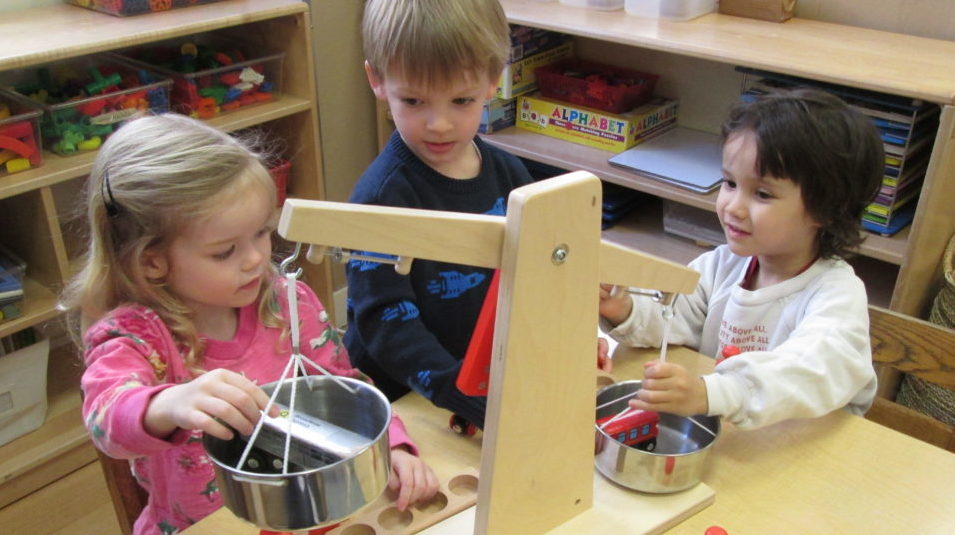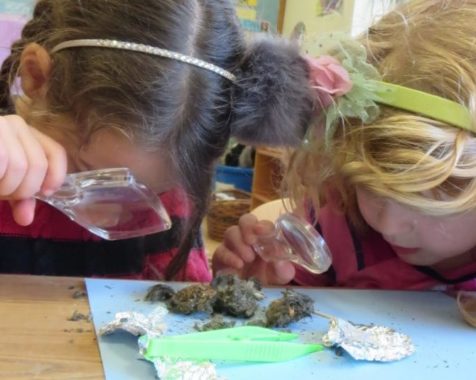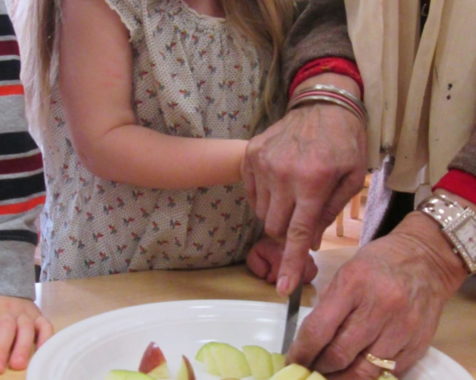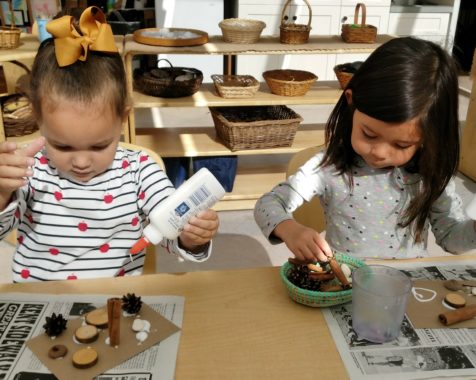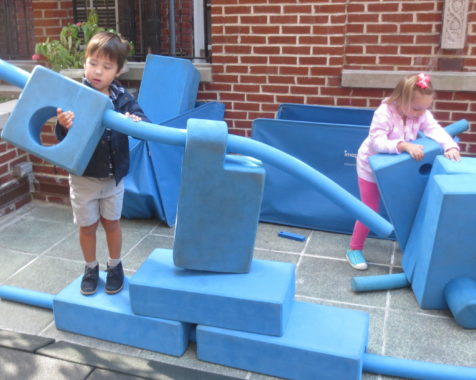Throughout the daily program, children are exposed to age appropriate math concepts and operations. As children work and play with materials, play games and carry out classroom activities, they become comfortable with the elements of math and form a foundation for later mastery. Everyday activities such as setting the snack table or attendance activities at group meetings offer opportunities to learn concepts from one-to-one correspondence to simple addition and subtraction.
Through explorative play with manipulative materials, children develop a variety of mathematics skills and concepts. For example, they learn about size, shape and spatial relations by working with construction manipulatives, unit blocks, puzzles, pattern blocks, and geoboards. Stern blocks, Unifix cubes and Cuisenaire rods help children learn to count and understand number relationships. Collections of objects (e.g., shells, animals, or vehicles) lend themselves to matching, sorting and categorizing. Self-correcting materials and games focus on specific skills such as discrimination, recognition and sequencing of numerals or matching numbers of objects with numerals. Puzzles and nesting materials help develop concepts of size relationships and seriation. Concepts of measurement develop as children play with materials such as water and sand; engage in cooking activities; learn to use a balance scale; find out how tall they are; or refer to daily schedules, calendars and clocks. Graphing (e.g., how we get to school, colors of clothing, favorite foods, etc.) is taught starting with blocks and moving to charts, then paper. In the 4’s and 5’s classrooms, teacher-directed math activities with small groups take place during ”dot time” and/or when half the group is at music and movement class.
Math concepts and skills are often developed through experiences relating to project work or themes being explored in the classroom. For example, when counting up to and preparing to celebrate the 100th day of school, children might bring in pennies that are counted into groups of 100 and then taken to the bank and exchanged for paper money. Some classes will then take the experience further and look at school supply catalogs to give the children an understanding of what could be purchased for the amount of money collected. A few years ago a class even used the money they had collected to buy a farm animal for a family in a third world country through Heifer International. These kinds of practical experiences that tie into real life are incredibly engaging for the children and help them to build math understanding and skills in context.
